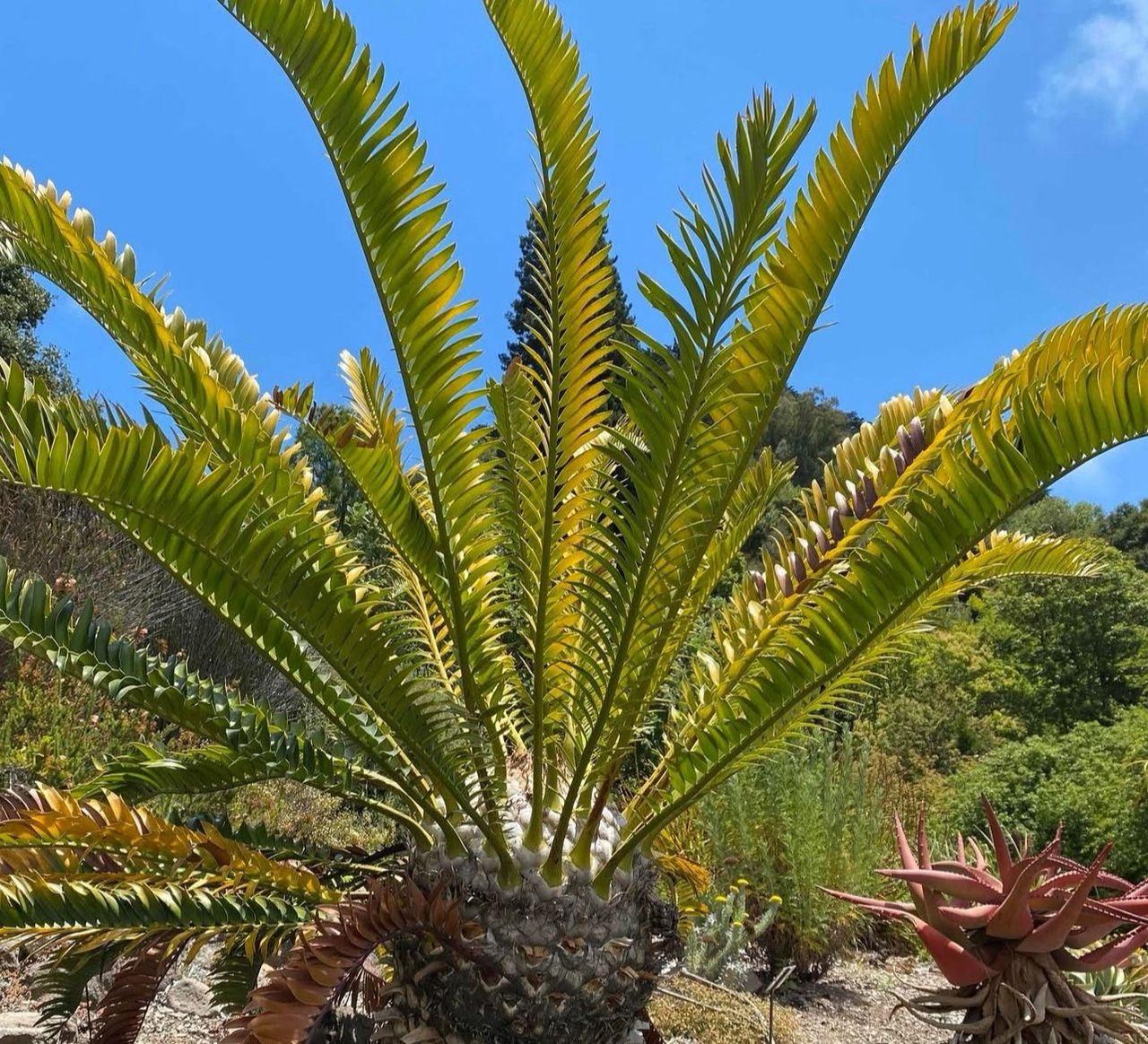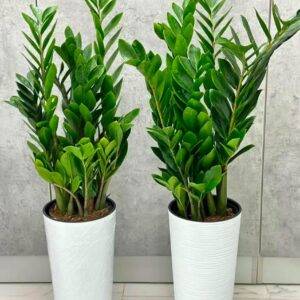Encephalartos altensteinii: The Ultimate Guide to Growing the Eastern Cape Cycad
Encephalartos altensteinii, commonly known as the Eastern Cape cycad or the breadtree, is an iconic and majestic cycad species native to South Africa. Its large stature, unique foliage, and fascinating evolutionary history make it a prized plant among collectors, landscapers, and cycad enthusiasts worldwide. This evergreen cycad features long, arching, deep green leaves and a sturdy trunk, making it an outstanding feature plant for gardens or containers.
This guide covers everything needed to know about buying, growing, and caring for Encephalartos altensteinii to achieve a healthy, thriving specimen in any cycad collection.
What Is Encephalartos altensteinii?
Encephalartos altensteinii belongs to the Zamiaceae family and is part of a group known as cycads—ancient seed plants with a lineage going back millions of years. It is native to the Eastern Cape Province of South Africa, typically growing in dense forests, rocky slopes, and along riverbanks.
Plant Description:
-
Grows as a single erect trunk, reaching heights of up to 7 meters (23 feet).
-
Trunk often 35-40 cm in diameter.
-
Leaves are large (up to 3 meters long), pinnate, with broad flat leaflets that droop and recurve in shade but stand more upright in sun.
-
Female plants produce 1-5 large yellow cones; male cones are cylindrical.
-
Leaves and stems are smooth without the pronounced spines common on some cycads.
-
These cycads are long-lived and slow growing but considered fast-growing relative to other cycads.
The species is vulnerable in the wild due to habitat destruction and over-collection but remains popular in cultivation due to its impressive size and elegant foliage.
Benefits of Cultivating Encephalartos altensteinii
-
Ornamental Value: Its towering height and lush foliage make it an outstanding focal point in landscape designs and large gardens.
-
Historical Significance: Cycads like E. altensteinii are considered living fossils dating from prehistoric times.
-
Adaptability: This species adapts well to a range of climates, tolerating both full sun and partial shade as well as light frost.
-
Container Growth: Young plants can be grown in pots or tubs before planting out.
Because of its grand appearance, it suits large outdoor settings but can also be used indoors or in greenhouses when young. Its slow growth and longevity make it a worthwhile investment for collectors.
How to Buy Encephalartos altensteinii
When buying Encephalartos altensteinii, whether as seeds, seedlings, or mature plants, consider these factors:
Buying Seeds:
-
Purchase fresh seeds from reputable specialty cycad seed growers or nurseries.
-
Seeds should be scarlet, firm, and free from mold.
-
Germination requires warmth, moisture, and patience (up to a year or more).
-
Bulk seed purchases may be available from specialty suppliers.
Buying Seedlings or Plants:
-
Choose healthy, disease-free specimens with intact leaves.
-
Check for pests such as scale insects or mealybugs.
-
Consider plant size; younger plants are better for container growth and easier transplanting.
-
Verify legal compliance regarding endangered status in your area.
Reliable nurseries and online stores specializing in cycads or rare plants are the best sources to ensure authenticity and health.
Ideal Growing Conditions for Encephalartos altensteinii
Light and Temperature
-
Thrives in full sun to partial shade.
-
Requires at least 6 hours of direct sunlight daily for vigorous growth.
-
Tolerates mild frost, but prolonged freezing temperatures can cause damage.
-
Optimal growing temperatures range between 21°C and 30°C (70°F to 86°F).
Soil Requirements
-
Prefers well-draining soil to prevent root rot.
-
Ideal soil is a rich, loamy mix with sand or perlite for drainage.
-
Soil should retain some moisture but never stay soggy.
Watering Guidelines
-
Moderate watering during active growing seasons (spring through early autumn).
-
Water frequency should be about once to twice a week in summer, depending on climate.
-
Water sparingly in winter to mimic the natural dry season.
-
Overwatering can be detrimental, leading to root rot or fungal infections. Let soil dry between watering.
Planting and Propagation
Planting Tips
-
Select a planting site with good drainage and sunlight exposure.
-
Dig a hole twice the width of the root ball but only as deep.
-
Backfill the hole gently, tamp down soil to remove air pockets.
-
Water deeply immediately after planting to settle the soil.
Propagation by Seeds
-
Clean seeds from sarcotesta fruit pulp.
-
Soak seeds in lukewarm water for 24-48 hours to soften the seed coat.
-
Plant seeds about twice their depth in moist, well-draining soil.
-
Maintain constant warmth (21-27°C/70-81°F) and humidity for germination.
-
Seedlings usually emerge after 6-12 months but can sometimes take longer.
Propagation by Offsets
-
Mature plants may produce basal suckers which can be separated and potted.
-
Offsets should have some roots attached to increase transplant success.
-
Handle carefully, and keep in humidity until established.
Maintenance and Care for Encephalartos altensteinii
Fertilization
-
Apply a balanced, slow-release fertilizer in spring and summer.
-
Formula rich in nitrogen, phosphorus, potassium, and magnesium aids foliage and root development.
-
Avoid over-fertilizing which can damage plants.
Pruning
-
Remove dead, damaged, or yellowing leaves to maintain plant health and appearance.
-
Prune suckers only if thinning the base is desired.
Pest and Disease Control
-
Watch for scale insects, mealybugs, and fungal infections.
-
Treatment involves insecticidal soap or horticultural oils.
-
Avoid overwatering to prevent root rot.
Repotting
-
Young plants grown in pots should be repotted every 2-3 years.
-
Use fresh, well-draining soil.
-
Best done during dormancy or spring before active growth begins.
Landscaping Uses and Design Ideas
Encephalartos altensteinii adds a prehistoric, sculptural beauty to:
-
Tropical and subtropical gardens.
-
Xeriscapes that require drought-tolerant plants.
-
Feature garden focal points or specimen displays.
-
Container gardens or greenhouse collections.
-
Public botanical gardens to showcase ancient plant heritage.
Pair with succulents, palms, and rocks for a dramatic effect. Its architectural form also complements modern and minimalist garden designs.
Environmental and Conservation Considerations
-
E. altensteinii is listed as vulnerable due to habitat loss.
-
Cultivation helps relieve wild collection pressure and conserve the species.
-
Responsible growers should acquire plants or seeds from legitimate sources.
-
Participation in cycad conservation programs and seed banks is encouraged for enthusiasts.
Troubleshooting Common Problems
| Problem | Cause | Solution |
|---|---|---|
| Yellowing Leaves | Overwatering, nutrient deficiency | Adjust watering, fertilize properly |
| Leaf Browning/Scorch | Too much direct hot sun | Provide shade during hottest hours |
| Root Rot | Poor drainage, overwatering | Improve soil drainage, reduce watering |
| Pest Infestation | Scale, mealybugs | Apply insecticidal soap or oil |
| Slow Growth | Insufficient light or nutrients | Increase light, fertilize as needed |
Healthy care practices prevent most issues.
Conclusion: Why Choose Encephalartos altensteinii for Your Garden?
Encephalartos altensteinii is more than just a cycad—it’s a living connection to the ancient past with stunning ornamental appeal. Its impressive size, adaptable nature, and unique leaf structure make it perfect for enthusiasts seeking a dramatic, long-lived plant. Whether planting in a large garden, container, or conservatory, the Eastern Cape cycad rewards with slow, elegant growth and durability.




Reviews
There are no reviews yet.